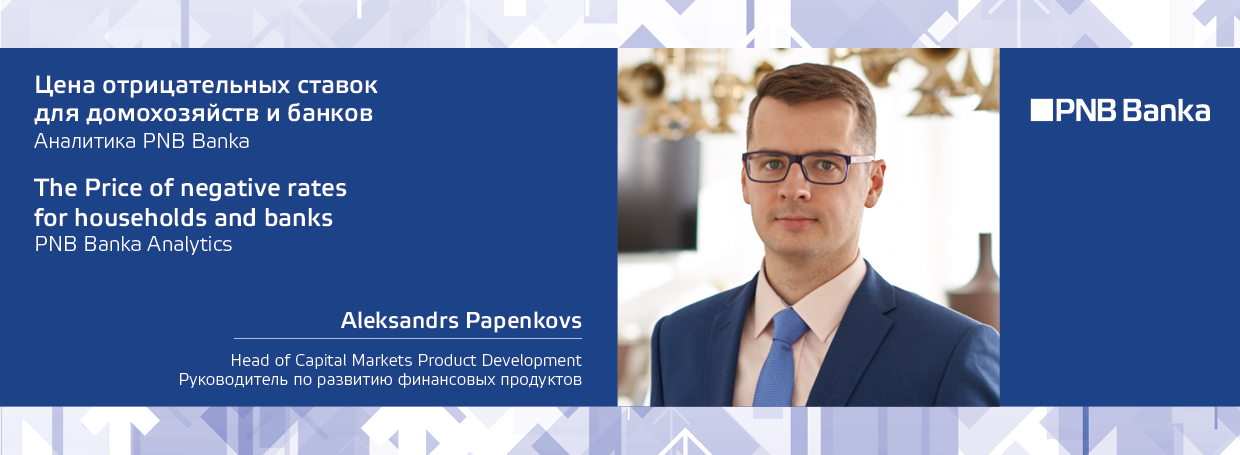The Price of negative rates for households and banks. PNB Banka Analytics20/06/2019
In June 2014, the European Central Bank (ECB) for the first time introduced a negative interest rate on accepting overnight liquidity from the banks. With this step, the ECB introduced a new paradigm into financial system of Europe – the era of negative rates. Retail clients tend to invest in term deposits with maturity of one year. Usually, overnight deposits are not offered to retail, only to some corporate clients. For banks, it is a vital product and they use it as the main instrument for allocation of excess liquidity – accumulated funds, available at the end of the day.
The amount of liquid funds is one of the most important indicators defined in numerous regulations and required by the supervisory authorities, which closely monitor compliance therewith. Reduction in the rate fostered increase in the banks’ liquidity allocation costs. Research results* show that in 2014 given the interest rate of -0.1%, the costs amounted to EUR 107 million; whereas, in 2018, given the interest rate of -0.4%, the amount of expenses grew to EUR 7.5 billion. Cumulative costs amounted to EUR 21.4 billion in May 2019. Taking into account the mood of the ECB’s policy, these costs are likely to grow. It is no secret that the banks with the largest balance sheet amounts have the largest proportion of costs: Germany – 33%, France – 24%, the Netherlands – 12%, total – 69%. This means that 3 countries in the Eurozone paid more than the rest 16 banks, namely, 31%, which is less than the amount paid by Germany alone. As a result, it is no surprise that many banks offer their clients an interest rate close to 0%. Profitability of banks in the Eurozone reduced on average by 4.3%. It does not sound very dramatic, but when looking at profits of banks in each country separately, the largest losses were in the banks of Finland – 14.1%, Cyprus – 13.9%, and then followed by Germany – 9.1%.
It is worth noting that although the basic ECB interest rate is the same for each financial institution, deposit offers to retail segment are different. Thus, the Netherlands have the highest deposit rates of about 1.22%, while Ireland has the lowest, i.e. – 0.03%. Latvia finds itself in the middle of the list with the interest rate of 0.46%**. The market is dynamic and sensitive to supply and demand. For example, over the last year deposit rates in Cyprus dropped by 0.86%, while in Slovakia they increased by 0.63%. These are average values. The highest rate was recorded in Italy – 1.72% (special offer of a particular bank). The observed trend: the more banks there are in a country, the higher the average rate. Negative rates appeared as a paradigm in post-crisis times with the purpose to stimulate economies. They affect all financial instruments. For example, the national debt of Germany, which is considered the benchmark in the Eurozone carrying the lowest credit risk, was negative up to 10 years of maturity. Thus, like most other countries in the Eurozone, including Latvia (as of this writing, the debt up to 5 years has negative return, i.e. by holding the debt up to maturity, the return will be less than the amount invested). It follows that, deposit rates above 0% are not that bad. The amount of securities with negative rate as at the end of the first quarter of 2018 is USD 10 trillion. The Current EUR rate of -0.4 might not be the bottom rate, as compared to with Swiss franc overnight rate, which is -0.75, and it might be lowered if ECB sees it necessary.
* Research on impact of negative interest rates conducted by the German deposit platform Deposits Solutions GmbH
** The average deposit rate in EUR for the period up to one year, February 2019, ECB data
|
